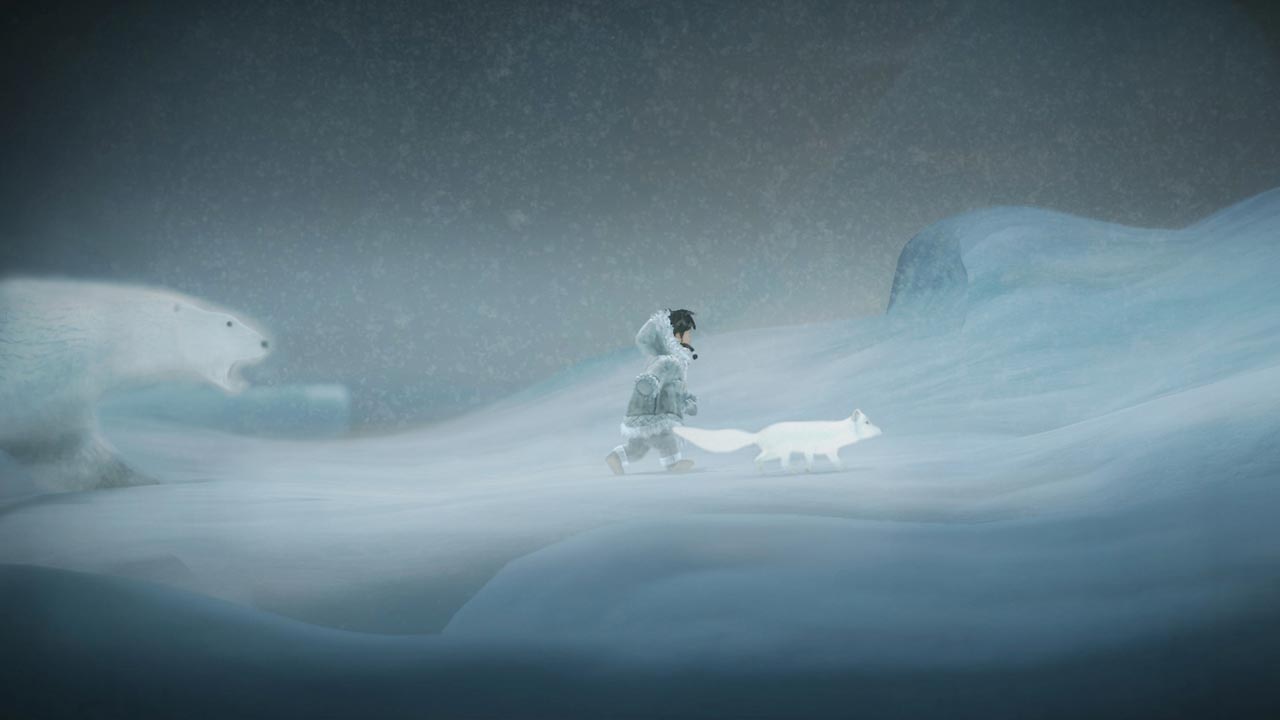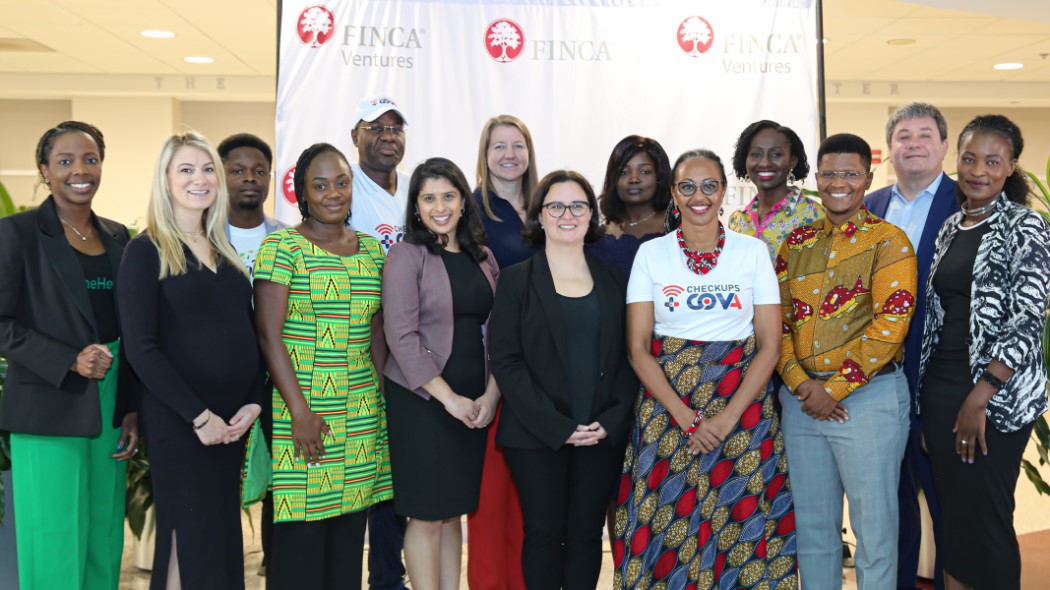“Creating Impact,” ImpactAlpha’s series on impact media, is sponsored by Upstart Co-Lab, a national collaboration disrupting how creativity is funded by connecting the $12 trillion of socially responsible and impact investing capital in the U.S. to the $804 billion U.S. creative economy.
Talk about cultural capital.
The Cook Inlet Tribal Council, looking for a way to engage youth in its community, set out to create a video game rooted in Alaska Native culture. Seven years later, the nonprofit social services agency in Anchorage is the largest equity owner in E-Line Media, a leading independent video game producer that counts social impact as its key differentiator.
“In the course of making the game, we realized there was something magical in what we were doing with E-Line,” says Amy Fredeen, the chief financial officer of the tribal council. The council’s social enterprise arm traded its ownership stake in the successful 2014 game, “Never Alone” along with additional capital, for about one-third ownership of E-Line.
Fredeen, who is of Inupiaq heritage, is now CFO of E-Line Media as well. The council’s CEO, Gloria O’Neill, is E-Line’s executive chairman. “We valued the financial return, but we also had to make sure that impact was very important as well,” Fredeen told ImpactAlpha.
Now, the studio has attracted billionaire Ray Dalio and other investors and is expanding into games-as-a-service (think Fortnite, with more than 78 million users and Minecraft, with 91 million). E-Line’s “Endless Mission,” an adventure game due out next year, will have the corollary benefit of teaching kids computer coding skills, which they’ll need to hack the game.
The social impact of video games is a matter of hot debate. PlayStation, XBox and other game platforms absorb the attention of young people worldwide, as many parents know all too well. The games have a strong pull on (online) wallets as well: Fortnite collected a staggering $2.4 billion in revenues last year.
Ever since “gamification” became a thing, advocates have sought to bring the appeal of video games to social behavior change and school curricula, with mixed success. While movies such as “Lincoln” and “Spotlight” and studios such as Participant Media have made social issues box-office-ready, video games with the whiff of do-good have not fared as well with the kids.
“Games are unique in that players have agency. They take on a role or identity. They get feedback. They level up to whatever goal or mastery designers create,” says E-Line’s Alan Gershenfeld, a movie and videogame industry veteran who chaired the nonprofit Games for Change. “They’re powerful learning platforms that create agency. The research was showing enormous potential, but it was not being realized.”
When E-Line pitched Dalio, the billionaire hedge fund investor (and ocean advocate), on its upcoming ocean-exploration game, “Beyond Blue,” he said, “‘Not only do I want to invest in that, but I want to invest in E-Line,’” said Dalio’s son, Matt, a venture capitalist and video game entrepreneurs. “I want to be part of all of it.
Investing in the impact of powerful new voices in film and video games
Co-creation
The saga of the 2014 video game, “Never Alone” (Kisima Ingitchuna), shows how authentic new voices married to top-notch production and entertainment value can not only create compelling titles, but may help drive the future of social impact media more broadly.
The traditional Inupiaq story, Kunuuksaayuka, that inspired Never Alone has been passed down for thousands of years, but the game’s modern history dates back about a decade. Through its for-profit subsidiary, the Anchorage-based Cook Inlet Tribal Council has been investing in coffee houses, recovery services and small businesses for three decades. But few initiatives were connecting with the community’s youths.
In 2010, Gloria O’Neill, the council’s president, charged the management team to use technology to take the wisdom of the community’s elders into the future. Why not a video game? Their research led Fredeen and the rest of the team to identify E-Line as a mission-aligned game developer. Fredeen cold-called Gershenfeld and invited E-Line’s team to come to Anchorage – in January. Gershenfeld walked the tribal council’s management through the risky economics of video games. Single games can costs millions to product. “We tried to talk them out of it,” Gershenfeld recalls.
In 2013, The tribal council formed Upper One Games, one of the first indigenous-owned video game companies, and struck an agreement with E-Line to co-develop a single game. The tribal council would own the game, but to de-risk the project and “get in the same shoes,” each organization took a small stake in the other. The companies formed a joint “greenlight committee” to review the game’s development and unlock funding.
The team built a studio in Seattle and recruited production talent. Fredeen brought together a team of native storytellers and writers. Together they flew in to the Utqiagvik, formerly known as Barrow, on Alaska’s North Slope, where the game is set. They set about securing rights to the story through both indigenous and federal government processes.
E-Line contracted distributors at PlayStation Network, Steam and other channels, as well as influencers on YouTube and other platforms, whose opinions can make or break a new game. “If we did a game around a Native Alaskan story, co-created with indigenous people, would you promote it?” Gershenfeld asked. “We got an enthusiastic reception. This would rise to the top because it’s so differentiated.”
The two-player game requires collaboration between a girl and a fox to find the source of extreme weather. More than two-dozen short documentaries get unlocked throughout the game. (Author’s note: my 13-year-old son, an expert in Minecraft, Fortnite and other games, is midway through the game with his friend and pronounces it, “A different kind of game but still fun.”)
At the 2014 launch party in Anchorage with more than a thousand Native elders, “You just saw the room light up,” Fredeen remembers. “They saw our culture reflected in popular media in a way that had never happened before.”
Fredeen says the game has encouraged person-to-person interaction, in addition to screen time. Players become storytellers. “Passing our stories down relies on more people being about to tell that story,” she says.
Before the launch, the Cook Inlet Tribal Council converted its interest in Upper One Games into equity in E-Line Media, making it the company’s largest investor, and merged the management teams. “They were the most aligned strategic investors we had met” and helped bring in other investors, Gershenfeld says.
Hacker camp
Matt Dalio, founder of Endless Computers, is working with E-Line on “Endless Mission,” the coding-skills scaffold disguised as a multiplayer game-as-a-service. Endless Computers makes a free operating system and works with developers in emerging markets to overcome barriers to access to digital tools. The majority of developers on Endless’s team learned to code by hacking video games. Minecraft has become one of the biggest game franchises in history by allowing people to create their own extensions, or “mods,” effectively bridging kids into coding by letting them hack the game itself.
“Endless Mission,” due out next year goes further, making everything hackable and enabling players to “cheat” their way through the game by stripping back layers, reprogramming gravity and gaining new lives. The new games can be mixed and matched, played and shared with friends, and imported into your own games.
“Coding is really is the unlimited,” Dalio says, powering all of the screens and devices that dominate our world. “Software really is the creative economy. As we look at a generation that is being shaped by their technology, the question is, ‘How do you make sure that kids are able to shape their technology, rather than be shaped by it?’”
For a glimpse of the power of gamification, check out “Human Resource Machine,” from Tomorrow Corp., which lets you program little office workers to solve puzzles (“Be a good employee! The machines are coming… for your job”). Tynkr has millions of young coders (or their parents) paying monthly subscription fees to build apps, design Minecraft mods and do “real world” coding with Python and JavaScript. Level Ex, which builds detailed games to take doctors through the cardio, airway and even gastrointestinal systems, is raising capital based on the more than $40,000 a year, on average, spent on advertising to every doctor in the U.S.
Just this month, Classcraft, based in Quebec and New York, raised $7.5 million to help teachers turn existing curriculum into gamified personalized quests. Modern Times Group invested $250,000 in Mightier, a game developed at Boston Children’s Hospital and Harvard Medical School to help children regulate their emotions. Paris-based Studytracks secured €1 million for rap songs and dance videos that help students in France, the U.S. and U.K. learn about science and Shakespeare.
Creative disruption
At E-Line, Fredeen and Gershenfeld are developing a “slate” financing vehicle to help impact investors back the next generation of social impact video games. The Impact Slate Game Fund, expected to be on offer next year, would help diversify the risks of backing a single title and help E-Line cut deals with producers and attract talent.
Like television production, the game industry is going through its own disruption, as new distribution platforms, such as Steam, have made it possible to break through the gatekeepers. Common “engines” for the underlying gameplay (the top two are Unreal and Unity) let even small studios produce detailed, state-of-the-art games.
But the democratization of the marketing and distribution makes it imperative to stand out among the flood of titles.
“When it all comes together, social impact provides a high level of differentiation in the market,” Gershenfeld says. “But good intentions are not enough.
“Games have to be good.”
Hiding in plain sight: More than 100 funds that are investing in the creative economy











